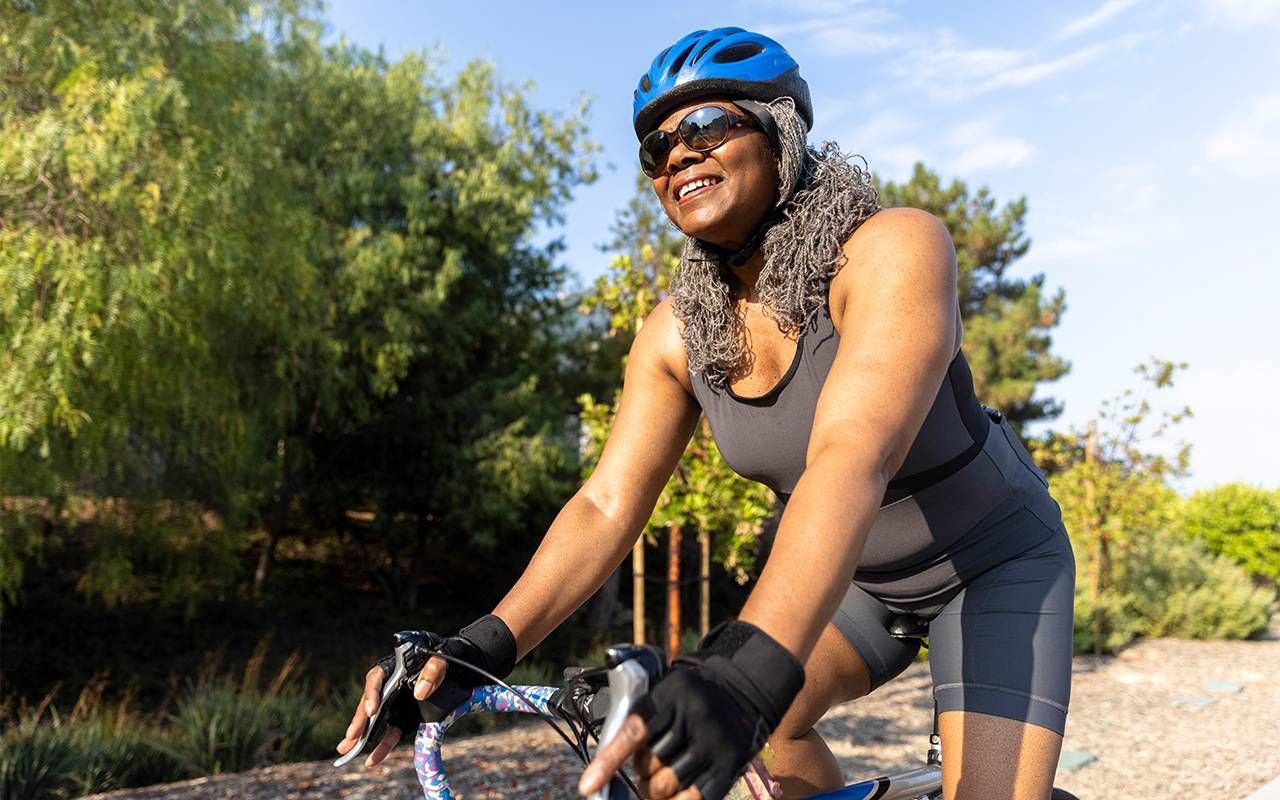Put Exercise on Your Post-Retirement List
Not into exercising? Go slow and emphasize pleasure for long-term exercise success.
You know you need to do it, and you promise to start tomorrow. But the road from the sofa to the gym, pool or yoga studio can prove insurmountable when the day dawns. You're just not into exercise. And you're not alone.

Only about one in five adults exercise regularly, and that number drops to 12% for people over age 65. Working adults say the main barrier is lack of time. But having more free time, combined with a lack of structure in retirement, can also make committing to exercise a challenge.
"Physical activity levels are no longer baked into your routine and a lot of sitting happens."
"People's schedules up until retirement have a lot of activity built in," said Dr. Katie Hill, chief medical officer of Nudj Health, a Pasadena-based company that works with physicians to improve the health of older patients.
"You're walking to and from the car, walking around the office, getting out from your desk, going to meetings, going to lunch," said Hill. "Our external schedules help give us structure. A lot of that goes away in retirement. Physical activity levels are no longer baked into your routine and a lot of sitting happens."
Add to that the pull of powerful forces, including fear of falling or injury, believing that exercise is for the young and it's too late to start, the appeal of more sedentary activities, and a feeling of having earned the right to relax and do what you please; all of these can put movement low on the priority list.
"Those who are lifelong exercisers are likely to continue into later life," said Margie E. Lachman, a psychologist at Brandeis University and lead author of When Adults Don't Exercise: Behavioral Strategies to Increase Physical Activity in Sedentary Middle-Aged and Older Adults.
"In contrast, to start exercising later in life requires one to decide how, what, and when to do it. It takes a commitment to start a new physical activity pattern after a long-term sedentary lifestyle."
The Risks of Too Much Leisure
With the need to exercise making headlines and public health experts touting the importance of movement, knowledge of the benefits of exercise is hard to miss. For example, staying active can lower the risks of cardiovascular disease, certain cancers, depression, anxiety, Type 2 diabetes, and metabolic syndrome.
Moving regularly can also help maintain a healthy weight, increase mobility and strength, and reduce — rather than exacerbate — the risk of falling.
Leading a sedentary life does the opposite, by increasing the risk of heart disease, cancer, diabetes, high blood pressure, anxiety and depression and making it increasingly more challenging to carry out activities of daily living.
Yet, despite the evidence, many older adults blame their accumulating health issues on aging, believing they're too old to start an exercise program. Their pain, discomfort and stiffness will only increase if they do.
It takes a commitment to begin a new physical activity pattern after a long-term sedentary lifestyle.
"The myth that our bodies degrade due to aging causes some older adults to stop exercising, though many of the problems originally associated with aging are the direct cause of physical inactivity," said Amanda Sterczyk, an Ottawa-based physical therapist and fitness advocate for older adults.
"Physical inactivity," she continued, "is prematurely aging their bodies. It's a self-fulfilling prophecy." It also can make it harder to do the things you enjoy, such as playing with grandkids or traveling without limitations.
But, shifting to a more active life from one largely sedentary doesn't mean gritting your teeth and bolting from chair to treadmill. Instead, experts advise going slowly and emphasizing pleasure.
The Pleasure Principle
While public health experts, including the Centers for Disease Control and Prevention, recommend 150 minutes of moderate-intensity aerobic exercise every week and two days of strength training, the experts interviewed for this article advise those new to the movement to ignore the guidelines when starting.
"If you're going to start a habit, you've got to start small," said Lana Heimann, a physical therapist and movement specialist in Princeton, New Jersey. "Find something that's more enjoyable than torturous. People will start with the bike or the treadmill; if they don't like it, they'll stop. If you're not enjoying it or you're miserable, you're not going to continue."
"If you're going to start a habit, you've got to start small."
Hill advocates devoting time to planning a weekly schedule focused on adding movement to normal activities and getting out of the house, which increases the amount of time you're not sitting, and your number of daily steps.
In addition to parking further away from the grocery store or walking to the mailbox, think of activities that "bring a smile to your face," she said, such as going to a local park to watch the dogs or moving to music.
"Consider and seek out ways to move," she continued. "Tap into your social network to create opportunities for moving that involve seeing people in person. Be thoughtful about it."
Other strategies to move and exercise more palatably include "temptation bundling," i.e., combining exercise with something enjoyable, for example, walking while listening to music or a podcast, riding a stationary exercise bike while watching a favorite television show, or walking with a friend.
Or you can reward yourself after exercising with something you enjoy, such as reading a book or getting an iced coffee.
Tips To Get Started
All experts advised speaking with a health professional if you have health issues or concerns, as your doctor might recommend a specific approach. However, if you're otherwise healthy, here are some tips when starting:
- Begin gradually. Pay attention to your body to avoid muscle strain. Then, as you continue to move, you can increase duration and intensity.
- Consider walking first. It's accessible, free, doesn't require unique clothing or equipment, and you can change the pace, i.e., a block of brisk walking followed by a slower pace. Start with about 10 minutes a day the first week and add five minutes weekly, aiming for a minimum of 30.
- Incorporate a water activity. Even if you're not a swimmer, you can get in a pool in the shallow end. Water relieves pressure on joints, and resistance against the water is tougher on muscles and strengthens them.
- Try stretching and mobility movements. A sedentary life creates muscle imbalance. Some get tight, and others get long and loose, further exacerbating the risk of injury. Check online for simple stretching options and go slowly and carefully to help muscles rebalance.
- Don't be alarmed if you experience some muscle soreness. It's to be expected if you've been sedentary for a long time. But if you experience sharp pains, particularly in the joints, stop doing the activity and follow up with your health care professional.
- Consider hiring a personal trainer or movement specialist who works with older bodies. If cost is an issue, seek out tutorials online.
"It takes a few weeks to develop a habit before it becomes an automatic part of one's everyday life," said Lachman. "When something is enjoyable, you will be more likely to keep doing it for the intrinsic pleasure and feeling good after doing it. When you start to miss it you know it is an integral part of your routine."


